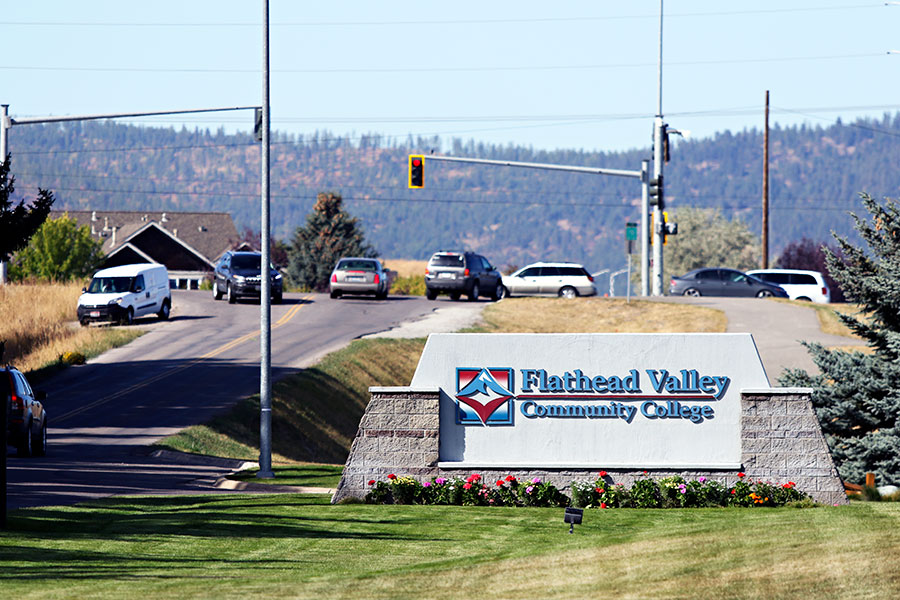Northwest Montana’s only post-secondary educator is responding to a local employee shortage by giving prospective employees the skills they need to start a career in one of the fields of greatest local need.
Students fall into one of two areas at Flathead Valley Community College, those who are seeking to receive the necessary credits to transfer to a four-year institution to continue their education and those who are looking to simply obtain the education necessary to thrive in a career without obtaining a bachelor’s degree or higher. Those in the latter group are part of the school’s Career and Technical Education (CTE) programs and make up sizeable part of Northwest Montana’s workforce, with school officials reporting that more than 75 percent of CTE graduates end up taking jobs in either Flathead or Lincoln counties, where FVCC has campuses, when their education is complete.
That education is part of the public school’s mission to respond to its community, and in order to do that FVCC administrators react nimbly to public data, their own internal analysis of students and course offerings, and consult regularly with local employers. Health care, for example, is one of the country’s fastest-growing employment sectors and the community college has a close working relationship with local leaders in the field, specifically at Kalispell Regional Healthcare, Flathead County’s largest employer. When, two years ago, Kalispell Regional had a need for medical lab technicians, FVCC created a program to train medical lab technicians. Similarly, when local HVAC businesses expressed a desire to train employees on the job rather than through an existing online training at FVCC, school leaders created an HVAC apprenticeship program.
“We continually have conversations with businesses and people in our community,” Peter Fusaro, the director of trades and industrial arts at FVCC, said. “We look within our program but we also look outside; what are some of the things we can be doing to be responsive to needs of the community. That’s why we’re able to do that and turn things around pretty quickly.”
As some programs grow, others shrink, and just as quickly as the school will start or expand a given field it can, and will, shut down some others. On both ends of the spectrum, the impetus for those decisions comes in part from advisory committees that are attached to every CTE program, and changes are not always as dramatic as starting or sunsetting a program, either. The offerings and methodology within a program can change based on recommendations and even on-the-job performance of recent graduates.
“For example, with nursing, we have representatives from both of the major hospitals and clinics in the area and they’ll come through and say ‘your nursing students are nailing it on these (subjects), we might suggest that you spend a little more time on (another subject),’ and then we make curricular adjustments in response to that.” Vice President of Academic and Student Affairs Chris Clouse said.
Health care represents a fast-growing piece of FVCC’s career training options, but it is far from the only piece. A variety educational fields that can lead to careers locally make up the trades and industrial arts offerings, including welding, heavy equipment operation, Commercial Drivers License certification, and firearms technology, and beyond the trades FVCC has CTE programs for surveying, natural resource careers, accounting technology, small-business administration, graphic design and others.
“We’d always like to get more students, just in order to send more students out into the community to help with the workforce,” Fusaro said. “That’s what’s holding back a lot of our businesses. They’re running one shift, they could be running three shifts, and it’s like ‘Hey, do you have students, do you have students?’”
To bring CTE students to the workforce as quickly as possible, much of the training in those programs is done via hands-on learning, some of it conducted in FVCC’s Occupational Trades building and some held off-site, including at Kalispell Regional. Still other students are part of registered apprenticeships, programs sanctioned by the Montana Department of Labor that offers on-the-job training and classroom education in concert, with the promise of a promotion when the apprenticeship is complete. Electrical apprentices, for example, need to complete a certain amount of coursework to become master electricians, and FVCC offers nighttime classes in subjects like physics and math to accommodate apprentices.
Outside of the apprenticeships, FVCC’s continuing education department works on with local businesses to give people who are already employed an opportunity to advance in their careers. The school’s supervisory series brings in employees who have recently been elevated to supervisory roles and provides them advanced training, and regularly offered computer course catch employees up on the latest software and technology they need to succeed.
For more information on all of FVCC’s offerings, including continuing education and CTE fields, visit www.fvcc.edu.
